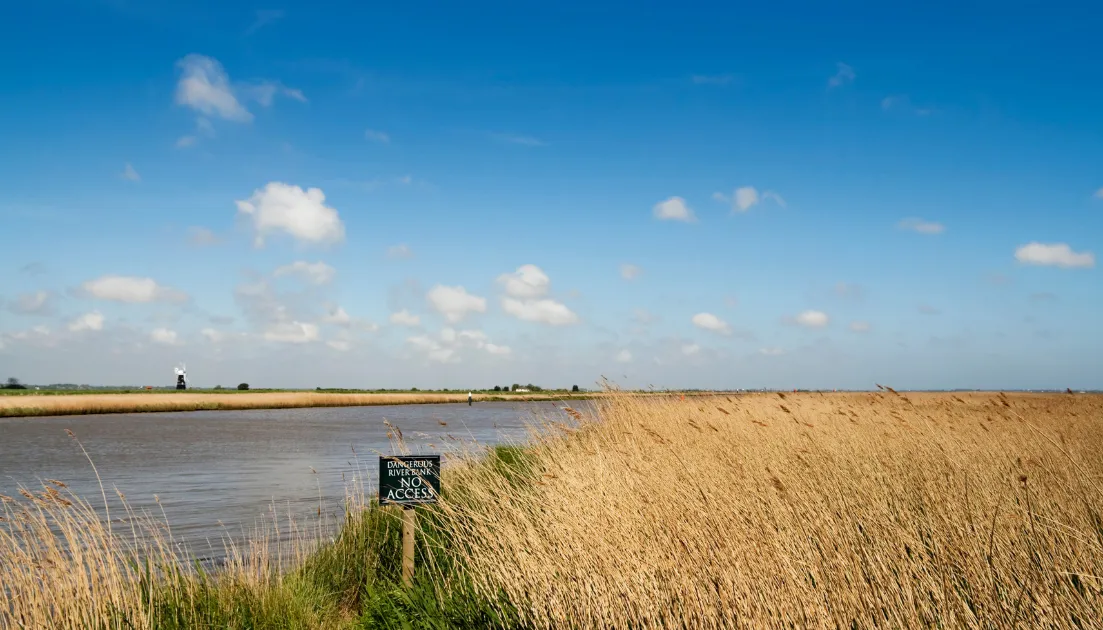River Waveney Travel: East Anglia’s Hidden Waterway Gem

The River Waveney forms a natural boundary between Norfolk and Suffolk, offering visitors a serene waterway experience unlike any other in East Anglia. This meandering river journey presents an ideal opportunity to discover the unspoiled countryside, abundant wildlife, and rich cultural heritage of one of Britain’s most picturesque waterways. For those planning a River Waveney travel adventure, this guide provides essential information on navigation, attractions, accommodation options, and practical tips to ensure a memorable exploration of this enchanting river valley.
The Character and Course of the River Waveney
The River Waveney stretches approximately 59 kilometres (37 miles) from its source near Redgrave, Suffolk, to its confluence with the River Yare at Breydon Water near Great Yarmouth. This gentle waterway forms part of the greater Broads National Park system, England’s largest protected wetland. The river flows through diverse landscapes, from shallow valleys and water meadows in its upper reaches to broader, deeper sections as it meanders eastward.
The Waveney’s character changes distinctly along its journey. The upper reaches near Diss feature narrow, winding passages bordered by lush meadows and woodland. As the river progresses past Bungay and Beccles, it widens considerably, creating a more lake-like environment perfect for broader vessels and more expansive views across the surrounding countryside. The lower Waveney, approaching Oulton Broad, becomes increasingly influenced by tidal patterns, offering a different experience depending on the time of day and lunar cycle.
For River Waveney travel enthusiasts, this variety provides opportunities for multiple visits, each offering a fresh perspective on this remarkable waterway. The river’s gentle flow makes it suitable for novice boaters, while its diverse environments satisfy experienced nature lovers seeking new vistas and wildlife encounters.
Navigating the River Waveney
Boating and Navigation
The navigable section of the River Waveney begins at Geldeston and continues downstream to Breydon Water. This 17-mile stretch provides ample opportunity for exploration by boat, with several hire companies operating in Beccles and Oulton Broad offering day boats, canoes, kayaks, and narrowboats for extended River Waveney travel adventures.
For those bringing their own craft, numerous public moorings exist along the river, with popular spots at:
- Beccles Quay
- Burgh St. Peter
- Somerleyton
- Oulton Broad
- Geldeston Locks
The Broads Authority manages most of these moorings, requiring a toll for privately owned vessels. Visitors should note that the speed limit throughout the Waveney is generally 5 mph (8 km/h), ensuring peaceful conditions and minimal bank erosion.
First-time navigators should pay particular attention to tide times when planning River Waveney travel, especially in the lower reaches where tidal influence significantly affects water levels and currents. The Broads Authority publishes regular updates on conditions, including bridge clearance heights, which vary with tide and season.
Walking and Cycling Routes
The Angles Way long-distance footpath follows much of the River Waveney valley for approximately 77 miles between Great Yarmouth and Thetford. This well-maintained path offers walkers spectacular views of the river and access to numerous villages, historic sites, and nature reserves.
For cyclists, the National Cycle Network Route 31 passes close to the river in several locations, particularly between Beccles and Bungay. Local authorities have also developed several circular cycling routes that incorporate sections along the Waveney Valley, providing options for day excursions centred around River Waveney travel experiences.
Wildlife and Natural Attractions
The River Waveney supports a remarkable ecosystem, making wildlife observation a central component of any visit. The river valley hosts numerous nature reserves and protected habitats, including:
Redgrave and Lopham Fen
Located near the river’s source, this Site of Special Scientific Interest (SSSI) is the largest valley fen in England and hosts rare species including the fen raft spider. Walking trails provide access to diverse habitats including wet meadows, heathland, and woodland edges.
Castle Marshes
Managed by the Suffolk Wildlife Trust, these waterlogged meadows between Beccles and Oulton Broad offer excellent birdwatching opportunities, with marsh harriers, bearded reedlings, and water rails frequently spotted. Winter brings large flocks of wigeon and teal to the river, creating spectacular dawn and dusk displays as they move between feeding grounds.
Oulton Broad
This expansive water body connected to the lower Waveney provides habitat for great crested grebes, kingfishers, and otters. The surrounding Nicholas Everitt Park offers convenient access points for wildlife observation while providing amenities for family visits.
Throughout the year, River Waveney travel experiences are enhanced by seasonal wildlife appearances. Spring brings nesting waterbirds and emerging dragonflies, summer sees water voles along the banks and butterfly populations in adjacent meadows, autumn brings migrating birds and the spectacle of changing foliage, while winter hosts visiting wildfowl from northern Europe.
Historic Sites and Cultural Attractions
The Waveney Valley’s rich history is evident in numerous historic structures and cultural sites accessible during River Waveney travel experiences:
Beccles and Its Bell Tower
The market town of Beccles serves as an important hub for River Waveney travel, with its distinctive bell tower standing separate from the parish church providing panoramic views across the river valley. The town’s historic quay hosts annual events including the Beccles Charter Weekend and river-based festivals.
Bungay Castle and Bigod’s Castle
The twin Norman castles at Bungay offer insights into the strategic importance of the River Waveney during medieval times. Although now partially ruined, these impressive structures dominate the town and provide context for understanding historical river use for defence and commerce.
Somerleyton Hall and Gardens
Accessible from moorings at Somerleyton, this magnificent Victorian country house showcases period architecture and formal gardens. River travellers can visit the hall and grounds, with the adjacent village offering refreshment opportunities at The Duke’s Head, a traditional riverside pub.
Burgh Castle Roman Fort
Near the confluence with the Yare, this remarkably well-preserved Roman shore fort dates from the 3rd century AD. Originally built to defend against Saxon raiders, it now offers visitors impressive views across Breydon Water and interpretation panels explaining its historical significance.
For those interested in industrial heritage, River Waveney travel reveals numerous historic mills, including Ellingham Mill and the restored watermill at Mendham, which demonstrate how the river’s power was harnessed for centuries before modern energy sources.
Accommodation Options Along the River
Accommodations along the River Waveney range from luxury riverside hotels to simple camping facilities, catering to different preferences and budgets:
On-Water Accommodation
Hiring a live-aboard narrowboat or cruiser provides the quintessential River Waveney travel experience, allowing visitors to moor at different locations each night. Companies in Beccles, Oulton Broad, and Geldeston offer vessels ranging from compact two-berth boats to larger family cruisers with modern amenities.
Riverside Hotels and Inns
Traditional accommodation options with river views include:
- The Waveney House Hotel (Beccles) – A Georgian hotel with its own moorings and river terrace
- The Wherry Hotel (Oulton Broad) – Modern accommodation overlooking the broad
- The Locks Inn (Geldeston) – Historic pub with basic accommodation accessible primarily by boat or foot
Rural Retreats and Camping
For those seeking closer connection with nature, riverside camping is permitted at designated sites including:
- Outney Meadow Caravan Park (Bungay)
- Waveney River Centre (Burgh St. Peter)
The latter also offers luxury lodges with hot tubs overlooking the river, providing a premium option for extended River Waveney travel experiences.
Practical Information for River Waveney Travellers
Best Times to Visit
The River Waveney offers distinct experiences throughout the year:
- Spring (April-May): Ideal for wildlife observation as birds nest and vegetation flourishes
- Summer (June-August): Peak season with longest daylight hours and warmest temperatures, but busier waterways
- Autumn (September-October): Beautiful foliage colours and quieter conditions
- Winter (November-March): Challenging for boating but excellent for birdwatching with winter migratory species
Safety Considerations
River Waveney travel requires attention to safety:
- Life jackets should be worn when on deck or in small craft
- Weather forecasts should be checked daily, particularly wind conditions
- Navigation charts should be kept current and consulted regularly
- Emergency contact numbers (including Broads Authority Rangers) should be readily available
Accessibility Information
Many River Waveney travel options are accessible to visitors with mobility challenges. Several boat hire companies offer vessels with wheelchair access, while the Broads Authority maintains accessible moorings at key locations including Beccles Quay and Nicholas Everitt Park. The Waveney River Centre has specifically designed accessible accommodation units and provides detailed accessibility information on their website.
Sustainable Tourism on the River Waveney
Environmental consciousness is increasingly important for River Waveney travel planning. Visitors can minimise their impact by:
- Using electric boats where available or opting for non-motorised craft
- Following designated paths to avoid disturbing sensitive riverside habitats
- Supporting local businesses that demonstrate environmental responsibility
- Participating in organised conservation activities through organisations like the River Waveney Trust
Several eco-friendly accommodation providers have emerged in recent years, including off-grid cabins near Bungay and solar-powered glamping sites in the upper valley, offering responsible options for environmentally conscious travellers.
Frequently Asked Questions
Is a licence required for boating on the River Waveney? Private boat owners need to purchase a toll from the Broads Authority. Hire boats include this toll in their rental price.
Can you swim in the River Waveney? Swimming is possible but not officially encouraged due to varying water quality, underwater hazards, and boat traffic. Dedicated wild swimming spots exist near Bungay and Earsham.
What is the best section of the River Waveney for beginners? The stretch between Beccles and Oulton Broad offers wider, easier navigation while providing access to services and attractions.
Are there any riverside pubs accessible only by boat? The Locks Inn at Geldeston is primarily accessible by boat or on foot, offering a unique destination for River Waveney travel enthusiasts.
Where can I find up-to-date information about river conditions? The Broads Authority website and visitor centres provide daily updates on water levels, navigation notices, and weather conditions affecting River Waveney travel.





